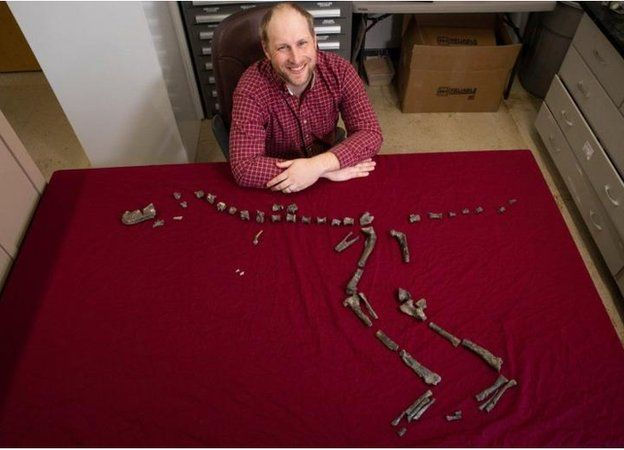Not so terrifying after all! 'Tiny' Tyrannosaurus-rex was just 3ft tall
- Ken Ecott
- May 7, 2019
- 2 min read

Scientists have report the discovery of a diminutive new tyrannosaur from New Mexico, US.
Paleontologists have described a dinosaur cousin of Tyrannosaurus rex that suggests the ferocious lizard came from far less terrifying ancestors. The newly named dinky dino is called Suskityrannus hazelae; the first part of the name comes from the Zuni Native American word for "coyote," as its specimen skeletons were found in New Mexico's Zuni Basin.
"Essentially, we didn't know we had a cousin of Tyrannosaurus rex for many years," Virginia Tech's Sterling Nesbitt, the lead author on the paper, found a number of the key bones as a 16-year-old high school student in 1998. But for about two decades, scientists weren’t certain what it was, until other small cousins of T. rex were discovered.
He says that the team first thought it might have found the remains of a Velociraptor, the vicious lizard species that terrorized many of our nightmares in the 1990s thanks to the Jurassic Park movie franchise. As the years went by, scientists began to learn more about the existence of T-rex cousins. The connection between the specimens and its notorious descendant is laid out in a paper in the journal Nature Ecology and Evolution.

Sterling Nesbitt and the fossil remains he found at age 16 in 1998
The two-legged mini rex is thought to have stood about 1 metre tall at the hip, leaning its long snout forward and trailed by a tail that would have made it about 3 metres long in all. That size would have been not much longer than just the skull of fearsome T. rex. Still scientists believe the lizard probably weighed in at only 45 to 90 pounds (20 - 41 kg), comparable to a large dog.
That makes this coyote-rex quite the tiny version of Tyrannosaurus, the tyrant king of the dinosaurs, which weighed roughly nine tons full grown, even with its silly, shrimpy arms. But Suskityrannus actually predates T. rex by several million years.
"Suski" lived earlier in time, however - 92 million years ago, compared with 80–66 million years ago for the biggest members of the tyrannosaur dynasty.
It is unclear why these carnivores, which were not particularly big compared with other dinosaurs alive at that time, later evolved to be so enormous.
"Suskityrannus gives us a glimpse into the evolution of tyrannosaurs just before they take over the planet," Nesbitt said.
"The new species shows that tyrannosaurs developed many of their signature features like a muscular skull, broad mouth, and a shock-absorbing foot when they were still small, maybe as adaptations for living in the shadows."
Smithsonian Institution paleobiologist Hans Sues, who wasn’t part of the study, said it was an important find.







Comments